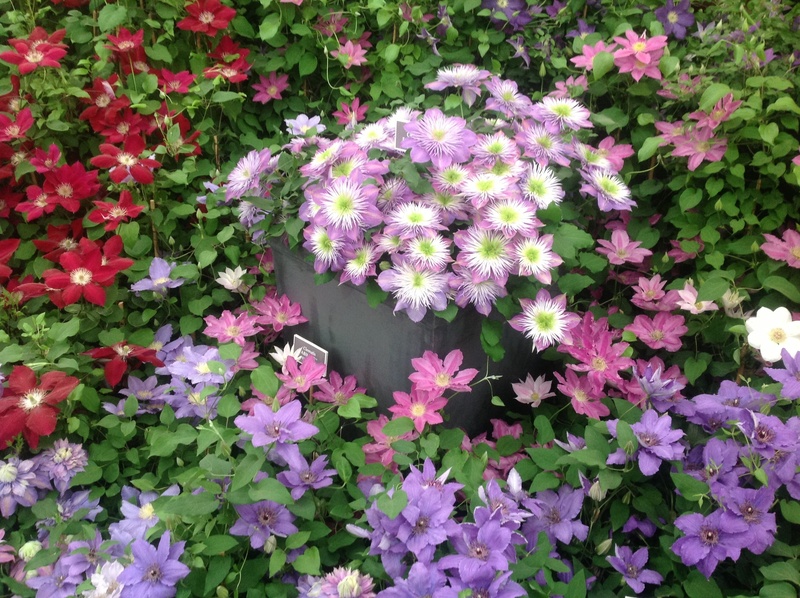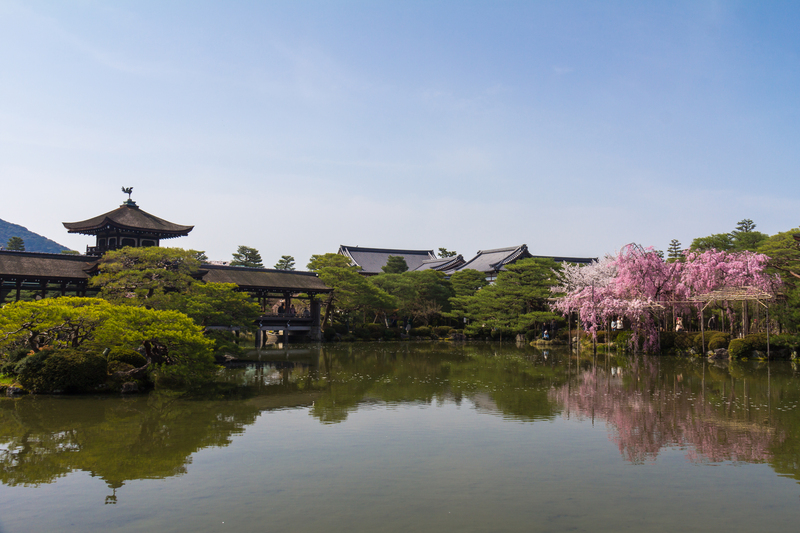Designing a Garden that Oaks Wind with Elegance
Posted on 14/09/2025

Designing a Garden that Oaks Wind with Elegance
Creating a garden that oaks wind with elegance is an artful fusion of aesthetics, function, and harmonious coexistence with natural elements. A thoughtfully designed garden doesn't just merely withstand breezy conditions -- it celebrates them. If you're seeking to embrace both the beauty and the briskness of the wind, while integrating majestic oaks as windbreaks or design features, you will find inspiration and actionable guidance in this comprehensive guide. Read on for the essential tips and techniques for designing a garden that gently dances with the wind.
- Understanding Wind's Effect on Gardens
- The Role of Oak Trees in Wind-Resistant Garden Design
- Strategic Layout: Embracing Wind with Garden Elegance
- Plant Selection for Gardens that Oaks Wind
- Hardscape Features that Tame the Wind
- Elegant Design Principles for Windy Gardens
- Maintenance Tips for Lasting Garden Beauty
- Final Thoughts on Gardens that Oaks Wind with Grace
Understanding Wind's Effect on Gardens
To design a garden that oaks wind with elegance, we must first appreciate how wind influences outdoor spaces. Wind affects temperature, plant health, soil moisture, growth direction, and even a garden's auditory mood. While gentle breezes can encourage healthy plant movement and pollination, harsh winds may damage delicate flowers, dry out soil, and create microclimates that challenge even the most seasoned gardeners.
Here are common impacts of wind on gardens:
- Desiccation: Dry winds rapidly deplete soil moisture and draw water from leaf surfaces.
- Physical Damage: Strong gusts can snap stems, strip foliage, or break branches, particularly in young or fragile plants.
- Pollination: While some plants rely on wind for pollination, excessive wind may disrupt normal reproductive cycles.
- Temperature Fluctuations: Wind can cool delicate blooms or chill emerging shoots during spring and autumn.
Understanding these challenges lays the foundation for choosing the right strategies and plant varieties to create an elegant and resilient garden environment.
The Role of Oak Trees in Wind-Resistant Garden Design
Few trees evoke strength and grace like the oak. Oaks are more than majestic focal points; they anchor gardens and provide critical windbreaks that allow less hardy flora to thrive. Integrating oaks when you're designing a garden to embrace and withstand wind brings both functional and aesthetic benefits.
Why Choose Oak Trees?
- Deep Root Systems: Oaks develop extensive deep roots, stabilizing the soil, reducing erosion, and providing natural wind barriers especially as mature specimens.
- Broad Canopies: The wide-arching branches filter and diffuse wind, reducing its velocity as it travels through your garden.
- Native Adaptation: Many oaks are native species in temperate regions, making them well-adapted to local wind, rainfall, and soil profiles.
- Wildlife Support: Oaks support diverse ecosystems, providing food and shelter for birds and pollinators, thereby increasing your garden's biodiversity.
- Longevity and Structure: As long-lived trees, oaks will give shape and continuity to your garden for generations.
By incorporating oaks into your landscape, you're not just erecting a wind-shield -- you're also cultivating elegance, resilience, and timeless beauty.
Strategic Layout: Embracing Wind with Garden Elegance
The secret to wind-friendly garden design is in the strategic layout of both living and non-living elements. This doesn't mean blocking the wind entirely -- instead, you want to slow, filter, and redirect it to weave elegance and functionality together.
How to Site Oak Trees for Maximum Wind Protection
- Assess Wind Direction: Use wind vanes, apps, or local knowledge to map predominant wind directions, especially during stormy seasons.
- Position Oaks Wisely: Plant oak trees perpendicular to prevailing winds--often west or northwest of your garden in the Northern Hemisphere.
- Create a Staggered Windbreak: Rather than a single line, stagger oak saplings in groups or zig-zag patterns for greater wind diffusion.
- Layer with Shrubs and Understory: Combine oaks with wind-tolerant shrubs such as viburnum, holly, or boxwood to make a multi-layered protective barrier.
- Leave Breezeways: Allow modest openings for gentle breezes to pass through, cooling the garden and preventing wind tunnel effects.
Additional Layout Tips
- Elevate Seating Areas: Place patios or benches near the leeward side (sheltered side) of oaks for comfort and stunning leafy theatre in the wind.
- Create Microclimates: Use garden structures or dense plantings to create protected "rooms" where tender plants can thrive.
- Consider Views: Don't sacrifice sightlines--prune oak branches carefully to frame vistas and garden features.
Plant Selection for Gardens that Oaks Wind
Selecting the right plants is crucial when cultivating a garden that oaks wind's presence. Wind-tolerant species--those with flexible stems, small or thick leaves, and deep roots--are essential. Such plants not only survive blustery conditions, but also add movement and symbolism to your garden design.
Best Oak Species for Windy Locations
- Quercus robur (English Oak): Iconic, tough, and adaptable.
- Quercus rubra (Northern Red Oak): Fast-growing, colorful in autumn.
- Quercus ilex (Holly Oak): Evergreen, drought-tolerant, and wind-resilient.
- Quercus palustris (Pin Oak): Elegant drooping branches, good for wet areas.
- Quercus coccinea (Scarlet Oak): Striking fall color, well-rooted.
Supporting Plants that Dance with the Wind
- Ornamental Grasses: Miscanthus, Pennisetum, and Calamagrostis sway beautifully in wind, adding movement and rustling soundscape.
- Wind-resistant Shrubs: Elaeagnus, sea buckthorn, and Viburnum tinus handle exposure while softening the lower layers.
- Perennials: Echinacea, Rudbeckia, Nepeta, and Achillea have sturdy stems and vibrant blooms that withstand drafts.
- Ground Covers: Ajuga, sedum, and creeping thyme create wind-tolerant, low-maintenance, colorful carpets.
Tip: Intermingle wind-resistant plants with occasional softer species (like foxgloves or cosmos) in sheltered microclimates for greater garden elegance and diversity.
Hardscape Features that Tame the Wind
Hardscape elements--walls, fences, screens, pergolas, and water features--play a crucial role in a garden that oaks wind with sophistication. Thoughtful placement of these structures alters wind patterns, adds texture, and anchors your garden visually.
Hardscape Solutions for Elegant Wind Management
- Permeable Fencing: Slatted wood, woven willow, or metal trellises allow some wind through while reducing destructive gusts -- far more elegant and effective than solid barriers.
- Living Screens: Use hedges (like hornbeam or yew) or climbing plants on arbors for green, breathable windbreaks.
- Low Walls and Berms: Curving stone or brick walls 18-24 inches high guide air flow, create intimate garden nooks, and complement oaks.
- Water Features: Reflective pools or bubbling fountains not only mask noise but interact beautifully with wind, adding movement and sound.
- Garden Sculptures: Install kinetic sculptures or tall, flexible metal forms to visually echo wind's presence.
Aim for balance--combine structural features with careful planting for a wind-safe yet visually lush environment.
Elegant Design Principles for Windy Gardens
A garden's gracefulness emerges not just from what stands still, but from what moves beautifully when the wind arrives. The following design principles will help you amplify elegance, evoke tranquility, and highlight fluidity in your wind-responsive garden.
- Movement as Art: Let flowing grasses, tree branches, and mobile sculptures celebrate the wind. Observe wind patterns during different seasons and position key plants to maximize visual interest.
- Cohesive Palette: Select harmonious color schemes that reflect the subtle shifts of leaves and sky -- silvers, greens, and natural wood tones blend organically with moving air.
- Layering and Depth: Arrange plants in layered sweeps--from tallest oaks and pines to mid-level shrubs and ground covers--to create both shelter and visual rhythm.
- Soundscapes: Use rustling foliage, wind chimes, and bubbling water features to compose a serene sensory experience.
- Focal Points: Frame seating areas, sculptures, or blooming borders with the wide arms of your oak, creating anchor points of tranquility amidst gentle motion.
Remember, an elegant windy garden is not static: its mood is dynamic, shifting, and endlessly fascinating, just like the wind itself.
Maintenance Tips for Lasting Garden Beauty
A garden that oaks wind beautifully requires a bit more attentive care to remain resilient and pleasing through the years.
- Regular Pruning: Inspect and prune oak branches to maintain balanced form and prevent wind damage or interference with garden traffic.
- Staking Young Trees & Plants: Support vulnerable plants during their first seasons until roots spread and stems toughen.
- Mulch Generously: Organic mulch conserves soil moisture lost to drying winds and protects roots from temperature fluctuations.
- Monitor Soil Health: Wind increases evaporation--test soil and amend it regularly with compost to retain nutrients.
- Water Wisely: Irrigate deeply in the morning to prepare plants for windy afternoons, using drip or soaker hoses to avoid unnecessary evaporation.
- Inspect Hardscapes: Check fences, trellises, and sculptures for stability, especially after storms.
With these habits, you protect your investment and encourage your garden to grow more beautiful with every passing year.
Final Thoughts on Gardens that Oaks Wind with Grace
Designing a garden that oaks wind with elegance is a rewarding journey--a dialogue with the natural world in which strength and beauty can coexist. The oak tree, both as a protector and as a symbol, anchors this vision. Through thoughtful layout, careful plant selection, poetic movement, and attentive maintenance, your garden will become a living canvas that honors the wind's energy rather than fighting it.
Let your space be a haven where oak branches sway, grasses whisper, and breezes bring a sense of vitality. Implement these practices, and you'll not only shield your landscape from nature's forces, but you'll also invite a deeper tranquility and sophistication into your outdoor retreat.
Take inspiration from the oak -- rooted in resilience, crowned in elegance, and forever in conversation with the wind.
Key Takeaways:
- Integrate oak trees and wind-adapted plants for natural wind protection and garden beauty.
- Use strategic layout and permeable hardscapes to moderate strong winds elegantly.
- Embrace movement, layering, and sensory elements to create a tranquil, ever-changing garden.
- Commit to mindful maintenance for a landscape that thrives in every season.
If you're ready to transform your garden, remember that elegance and resilience are not opposites -- they're partners in a truly wind-wise design.


